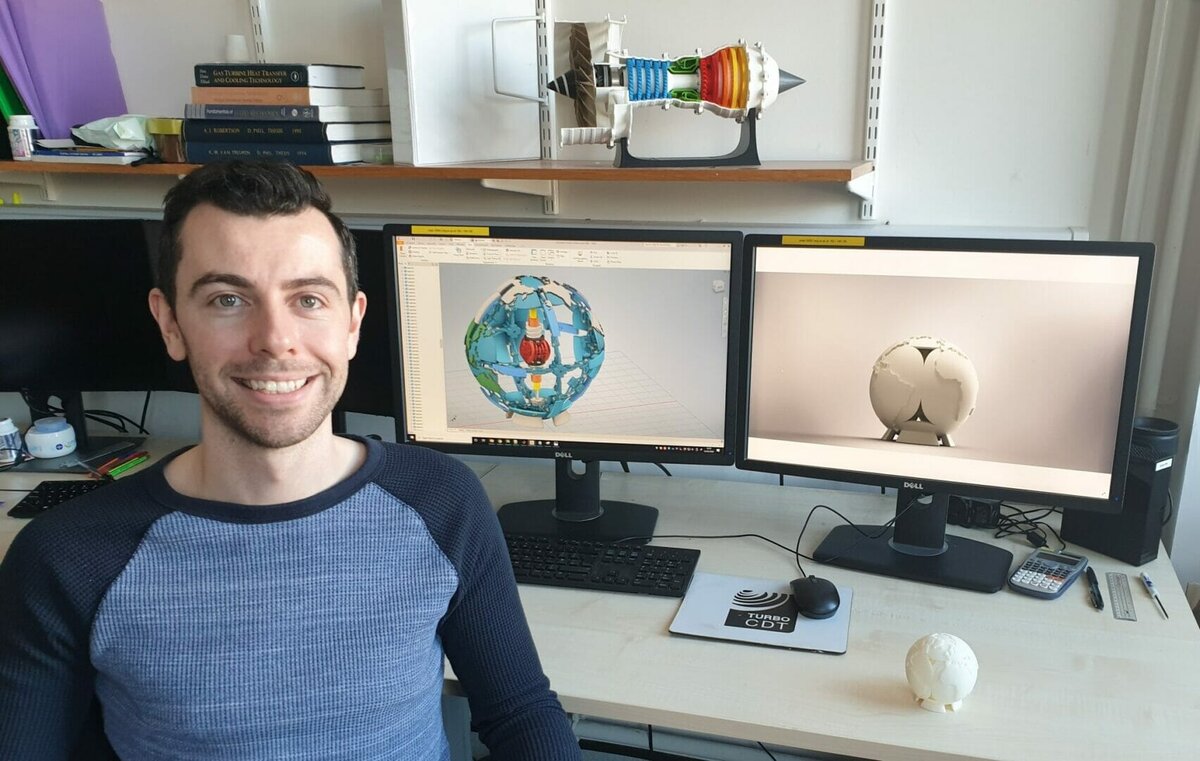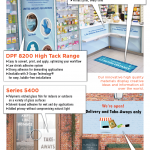Student wins free Stratasys FDM 3D Printer for The University of Oxford for a year, exposing more students to cutting-edge technology that will boost their learning and research
Irish PhD student, Daniel Fahy, has won first place in Stratasys’ annual Extreme Redesign Challenge Awards. Fahy took first place in the ‘Art, Jewelry and Architecture’ category winning a $2,500 scholarship, a free Stratasys FDM 3D Printer for his university for a year and a printout of his winning design.
Fahy is currently completing his DPhil in Engineering Science at the University of Oxford. Having previously won the same category in 2017, for this year’s competition he leveraged his extensive knowledge of engineering and past experiences with 3D printing to recreate a fond childhood memory – a Hoberman Sphere – from scratch within just a few weeks.
Fahy, comments: “I feel privileged to have won this competition. The main reason I entered was because it allowed me to be creative and explore my passion for engineering and design via a project of my own. While the Extreme Redesign Challenge provides guidelines, 3D printing gives you the design freedom to bring ideas to life that I previously thought not possible. This can be liberating, but also challenging, as you need to create a design that looks good but also functions as a 3D model.
“I’m particularly delighted to have won a Stratasys FDM 3D printer for our university for the coming year,” he adds. “Having utilized 3D printing throughout the latter years of my education, I believe all students should have access to this technology. Not only helping to bring out creativity in design, but also showing students how they can turn their ideas into physical products in ways traditional engineering methods don’t allow. This is very important for those pursuing engineering careers in the future.”
The Extreme Redesign Awards, hosted by GrabCAD and Stratasys, invite students globally from secondary to tertiary education, to either redesign an existing piece of art, jewelry or architecture, or create an entirely new one. A jury of distinguished industry figures evaluate all entries based on their creativity, but also how mechanically sound they are and whether they could realistically be produced.
“Daniel’s winning design perfectly exemplifies the level of creative innovation we receive globally each year as part of our Extreme Redesign Challenge,” says Gina Scala, Director of Marketing, Global Education, Stratasys. “15 years on from the inception of the competition and students still continue to amaze us with their ability to push the boundaries of design and creativity with 3D printing. The bar was particularly high this year, with our panel impressed with so many diverse designs – making the winners this time round truly deserving having shown exceptional levels of creative design.”
At the University of Oxford, a dedicated 3D printing laboratory in the Department of Engineering Science was set up in January 2019, providing all students from undergraduate to PhD level access to the technology. The Stratasys FDM 3D Printer has been installed at the Department’s Oxford Thermofluids Institute, enabling students to accelerate their research by turning design ideas into functional prototypes within a matter of hours.
Fahy concludes: “3D printing is going to be around for a very long time, especially as the technology becomes more mature, less expensive and as a result more accessible to different fields. Since it provides such a valuable opportunity to accelerate learning and development, I believe it is critical that students, educators and people within industry know this technology is available and learn to use it.”








